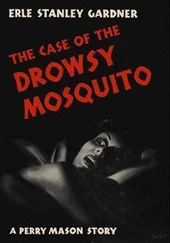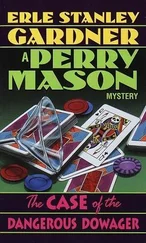Daniel Gardner - The Science of Fear
Здесь есть возможность читать онлайн «Daniel Gardner - The Science of Fear» весь текст электронной книги совершенно бесплатно (целиком полную версию без сокращений). В некоторых случаях можно слушать аудио, скачать через торрент в формате fb2 и присутствует краткое содержание. ISBN: , Издательство: Penguin Group (USA) Incorporated, Жанр: Психология, Политика, Прочая научная литература, на английском языке. Описание произведения, (предисловие) а так же отзывы посетителей доступны на портале библиотеки ЛибКат.
- Название:The Science of Fear
- Автор:
- Издательство:Penguin Group (USA) Incorporated
- Жанр:
- Год:неизвестен
- ISBN:9780525950622
- Рейтинг книги:3 / 5. Голосов: 1
-
Избранное:Добавить в избранное
- Отзывы:
-
Ваша оценка:
- 60
- 1
- 2
- 3
- 4
- 5
The Science of Fear: краткое содержание, описание и аннотация
Предлагаем к чтению аннотацию, описание, краткое содержание или предисловие (зависит от того, что написал сам автор книги «The Science of Fear»). Если вы не нашли необходимую информацию о книге — напишите в комментариях, мы постараемся отыскать её.
The Science of Fear — читать онлайн бесплатно полную книгу (весь текст) целиком
Ниже представлен текст книги, разбитый по страницам. Система сохранения места последней прочитанной страницы, позволяет с удобством читать онлайн бесплатно книгу «The Science of Fear», без необходимости каждый раз заново искать на чём Вы остановились. Поставьте закладку, и сможете в любой момент перейти на страницу, на которой закончили чтение.
Интервал:
Закладка:
The Example Rule is particularly good for learning from the very worst sort of experiences. A snake coils and hisses inches from your hiking boot. An approaching truck slips onto the shoulder of the highway and then weaves into your lane. A man presses a knife to your throat and tells you not to resist. In each case, the amygdala, a lump of brain shaped like an almond, will trigger the release of hormones, including adrenaline and cortisol. Your pupils dilate, your heart races, your muscles tense. This is the famous fight-or-flight response. It is intended to generate a quick reaction to immediate threats but it also contains one element intended to have a lasting effect: The hormones the amygdala triggers temporarily enhance memory function so the awful experience that triggered the response will be vividly encoded and remembered. Such traumatic memories last, and they are potent. Long after calm has returned, even years later in some cases, they are likely to be recalled with terrifying ease. And that fact alone will cause Gut to press the alarm that we experience as an uneasy sense of threat.
Even in circumstances much less dramatic than those that trigger the fight-or-flight response, the amygdala plays a key role. Neuroscientists have found that the amygdalas of people sitting in a quiet, safe university laboratory will suddenly spark to life when frightening or threatening images are shown. The level of activity corresponds with the level of recall people have later. As psychologist Daniel Schacter recounts in his book The Seven Sins of Memory , people who are shown a sequence of slides ranging from the ordinary—a mother walking her child to school—to the dreadful—the child is hit by a car—will remember the negative images far more readily than the others.
An image doesn’t have to be as awful as a car hitting a child to have this effect, however. A face with a fearful expression will do. Neuroscientist Paul Whelan even found that flashing an image of a fearful face for such a short time that people aren’t consciously aware that the face is fearful—they report that it looks expressionless—will trigger the amygdala. And that makes the memory more vivid, lasting, and recallable.
Fear is certainly the most effective way of gluing a memory in place, but there are others. Any emotional content makes a memory stickier. Concrete words—apple, car, gun—do better in our memories than abstractions like numbers. Human faces are particularly apt to stick in our minds, at least if they’re expressing emotions, because scientists have found such images stir the amygdala just as frightening images do. And all these effects are cumulative. Thus, a visually striking, emotion-drenched image—particularly one featuring a distraught person’s face—is almost certain to cut through the whirl of sensations we experience every moment, grab our full attention, and burrow deep into our memories. A fallen child clutching her knee and heaving agonized sobs may just be a stranger on the sidewalk but I will see her and remember, at least for a while—unlike the boring conversation about taxes I had at that dinner party with a man whose name I forgot almost the moment I heard it.
Novelty also helps in getting something into memory. Psychologists have found that people can usually give a detailed accounting of what happened at work the day before. But one week later most of the details are gone and in its place is an account of what happens on a typical workday. People guess, in other words. The problem here is what Daniel Schacter calls “interference.” What you did Monday is similar to what you did on Tuesday and the other workdays, so when you try to recall what you did on Monday a week later, experiences from the other workdays interfere. But if Monday had been your last day of work before going on vacation, you would have much better recall of that day a week later because it would be more unusual.
Concentration and repetition also boost memory. If you see something—anything—and don’t give it a second thought, there’s a good chance it will never encode in memory and will vanish from your consciousness as if it had never happened. But if you stop and think about it, you make the memory a little stronger, a little more lasting. Do it repeatedly and it gets stronger still. Students do this when they cram for exams but the process can be much more informal: Even a casual conversation at the watercooler will have the same effect because it, too, calls the memory back into consciousness.
There is obvious survival value in remembering personal experiences of risk. But even more valuable for our ancient ancestors—and us, too—is the ability to learn and remember from the experiences of others. After all, there’s only one of you. But when you sit around the campfire after a long day of foraging, there may be twenty or thirty other people. If you can gather their experiences, you will multiply the information on which your judgments are based twenty or thirty times.
Sharing experiences means telling stories. It also means visualizing the event the guy next to you at the campfire is telling you about: imagining the dimmest member of the tribe wading into the shallow waters of the river; imagining him poking a floating log with his walking stick; imagining the log suddenly turning into a crocodile; imagining the trail of bubbles that marks the demise of the tribe’s dimmest member. Having envisioned the scene and committed it to memory, Gut can then use it to make judgments just as it uses memories from personal experiences. Risk of crocodile attack at water’s edge? Yes. You can recall just such an incident. Chance that the log floating out there isn’t what it appears? Considerable—that incident was easily recalled. You may not be consciously aware of any of this analysis, but you will be aware of the conclusion: You will have a feeling—a sense, a hunch—that you really shouldn’t go any closer. Gut has learned from someone else’s tragic experience.
But not all imagined scenes are equal. An event that comes from a story told by the person who actually experienced it provides valuable, real-world experience. But an imagined scene that was invented by the storyteller is something else entirely. It’s fiction. Gut should treat it accordingly, but it does not.
One of the earliest experiments examining the power of imagination to sway intuition was conducted during the U.S. presidential election campaign of 1976. One group was asked to imagine Gerald Ford winning the election and taking the oath of office, and then they were asked how likely it was that Ford would win the election. Another group was asked to do the same for Jimmy Carter. So who was more likely to win? Most people in the group that imagined Ford winning said Ford. Those who saw Jimmy Carter taking the oath said Carter. Later experiments have obtained similar results. What are your odds of being arrested? How likely is it you’ll win the lottery? People who imagine the event consistently feel that the odds of the event actually happening are higher than those who don’t.
In a more sophisticated version of these studies, psychologists Steven Sherman, Robert Cialdini, Donna Schwartzman, and Kim Reynolds told 120 students at Arizona State University that a new disease was increasingly prevalent on campus. The students were split into four groups. The first group was asked to read a description of the symptoms of the new disease: low energy level, muscle aches, headaches. The second group was also asked to read the symptoms, but this time the symptoms were harder to imagine: a vague sense of disorientation, a malfunctioning nervous system, and an inflamed liver. The third group was given the easily imaginable list of symptoms and asked to imagine in great detail that they had the disease and were experiencing the symptoms. The fourth group received the hard-to-imagine symptoms and was asked to imagine they had the disease. Finally, all four groups were asked to answer a simple question: How likely is it that you will contract the disease in the future?
Читать дальшеИнтервал:
Закладка:
Похожие книги на «The Science of Fear»
Представляем Вашему вниманию похожие книги на «The Science of Fear» списком для выбора. Мы отобрали схожую по названию и смыслу литературу в надежде предоставить читателям больше вариантов отыскать новые, интересные, ещё непрочитанные произведения.
Обсуждение, отзывы о книге «The Science of Fear» и просто собственные мнения читателей. Оставьте ваши комментарии, напишите, что Вы думаете о произведении, его смысле или главных героях. Укажите что конкретно понравилось, а что нет, и почему Вы так считаете.












